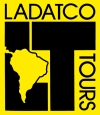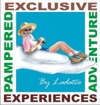
Custom Designing Pampered Adventure since 1966

Destinations
Experiences
 |
L A D A T C
O T O U R S Custom Designing Pampered Adventure since 1966 |
 |
||||||||
| HOME | South America | Falkland Islands | Antarctica | Unique Destinations |
Unique Experiences |
Newsstand | ||||
|
Falkland
Islands Accommodations |
 |
 |
 |
 |
 |
|
ABOUT BLEAKER ISLAND -
in their own words:
Bleaker Island, half an hour’s
flight from Stanley, is both an organic sheep and cattle farm
and a tourist destination.
Being a long thin island, it has a very extensive coastline that attracts a multitude of wildlife. The island hosts a massive imperial cormorant colony, three types of breeding penguins, wildfowl, and sea lions haul out on the rocks and offshore tussac islands. The wildlife is conveniently located close to the settlement where two of the four houses accommodate visitors. Cassard House, built in 2011, sleeping eight, is designed to be eco-friendly, with solar energy supplementing the wind power supplying electricity to the settlement, and is named after a French barque that was shipwrecked on the southern end of the island in 1906. Click here for more details. Cobb’s Cottage sleeps four and was built in 2001, and is named after Arthur Cobb, farmer and naturalist, who lived here in the early 1900’s. Click here for more details Bleaker Island and its seven surrounding tussac islands, the Bleaker Island Group, are internationally recognized as an Important Bird Area (FK04), and the northern part of the island was designated as a National Nature Reserve in 1970. Several of the tussac islands are rat-free, and Cobb’s wrens and tussac birds breed there and are seen on Bleaker Island, while sooty shearwaters and grey-backed storm petrels have recently been found to be breeding on Sandy Bay Island and probably on Ghost Island. The main island comprises 2,070 ha (5,155 acres) with low cliffs, sandy beaches, bays and sheltered coves. It’s easy walking country, and sunset overlooking Sandy Bay with a mixture of Gentoo and Magellanic penguins congregating on the white sand is just one of the spectacular views to be enjoyed when on Bleaker Island! Sheep stocking rates have
considerably reduced from the practices of 100 years ago, from
3500 head then to 1000 head now, whilst a nucleus of 55 Hereford
breeding cows imported from Chile in 2004 provide a regular
supply of good organic steaks!
|
||||||